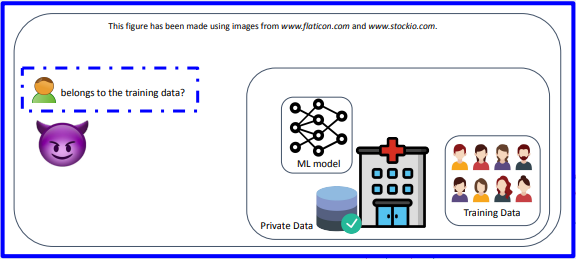Understanding threats in federated learning
Understanding threats in federated learning. - Alberto Pedruozo-Ulloa (atlanTTic Research Center, Universidade de Vigo)
Outline
- Introduction: Conventional vs Federated Learning.
- In the line of fire: Privacy Threats and Attacks.
- Gossiping adversaries: Honest but Curious.
- Into the dark side: Getting Malicious.
- Privacy metrics: Can we measure the Privacy Leakage?
- Conclusions*: Episode PETs - a new Hope
Introduction: Conventional vs Federated Learning.
High-level Workflow in Machine Learning

Gather enough data
- Data collection
- Gather relevant data.
- Preprocessing data
- Clean and prepare the data for analysis.
Train a model
- Build an ML model (choose an adequate model, model training, hyperparameter tuning, evaluate the model, etc.).
Deploy the model
- Use the trained model for your application.
What if data comes from different sources?
All local data must be sent to a trusted party.
- Encryption can be applied to protect data in transit and at rest.
- However… we must still trust the party doing the ML training!

Federated Learning
- Training without explicitly sharing data.
FL allows the training of ML models without explicit sharing of training data. - Only local updates are exchanged.
- Cross-silo FL
A model is built from the training sets of a reduced number of servers.

In the line of fire: Privacy Threats and Attacks.

Some example attacks
- Is there a specific person in the database?
- Can we reconstruct attributes of people in the database?
- Can either the Aggregator or any Data Owner poison the updates?


The power of the aggregator
- Initially proposed to avoid moving the training data out.
- Reducing communication costs and “ensuring data privacy”.
- Some example attacks:
- Is there a specific person in the database of a particular hospital?
- Can we reconstruct attributes of the people in the database?

Membership inference
- General cancer risk: 350 per 100000 people (aged 45-49)
- “Cancer risk” knowing that specific person is contained in the training data: 1 per 2 people

Gossiping adversaries: Honest but Curious.
Honest but curious Aggregator and/or Data Owners
- This adversary
- Does not deviate from the prescribed steps.
- May still try to learn information from the data exchanged.

Private Aggregation with Privacy-Enhancing Technologies (PETs)
- PET methods can help to counter the confidentiality threats from the Aggregator and DOs (e.g., Homomorphic Encryption, Differential Privacy, etc.).

Into the dark side: Getting Malicious.
Malicious Aggregator and/or Data Owners
- This adversary
- May actively deviate from the prescribed steps to try to learn information from the data exchanged.

![]()

Some possible fixes (without PETs)
- Malicious Aggregators -> Adding redundancy in the aggregation.
If we add extra parties in charge of the aggregation, we can check whether all of them provide the same aggregation. - Malicious Data Owners -> Trying new aggregation rules.
We could have a more robust aggregation by considering, for example, the median instead of the mean.
Privacy metrics: Can we measure the Privacy Leakage?
Privacy metric in TRUMPET

- Should provide a “score” proportional to the privacy risks in the FL implementation. We could need more than one metric depending on the particular attack…
- Some possible examples for this score
- Measure the effectiveness of the State of the Art attacks.
- Measure the remaining privacy budget.
- How much y tells us about x?

- If we have a statistical model for x and y, the mutual information comes naturally as a measure of leakage.
- We have defined a privacy metric for membership inference attacks based on the mutual information between the membership variable for the target record and the observations.

Conclusions
- Federated Learning (FL) appeared as a promising solution to train data coming from different sources.
- Only parameter updates are exchanged.
- Data is never directly shared.
- Despite its potential, FL introduces several relevant security and privacy challenges.
- To mitigate these issues:
- More robust architectures can be designed.
- PET (Privacy Enhancing Technologies) techniques can be incorporated (SMPC, HE, DP, ZKPs, etc).
- In TRUMPET we propose mechanisms to quantify the privacy leakage caused by the exchanged updates.